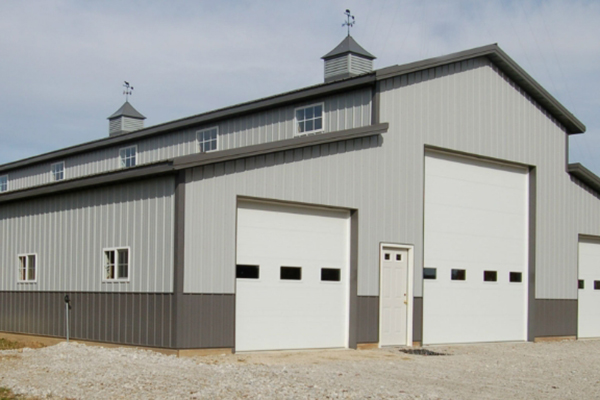When you think of wainscoting, images of elegant wooden panels in traditional homes may come to mind. However, in the context of metal buildings, wainscoting serves both decorative and functional purposes—offering enhanced aesthetics, durability, and protection. But what exactly is wainscoting on a metal building, and why should you consider it?
This article explores the concept, types, benefits, and common applications of wainscoting on metal structures, helping you understand how it can enhance the value and appearance of any steel or metal construction.

Defining Wainscoting on a Metal Building
Wainscoting on a metal building refers to the installation of a contrasting lower panel—usually made of metal or other durable material—along the bottom portion of the exterior wall. Typically, this section runs 3 to 4 feet high, wrapping around the base of the structure.
Unlike traditional wood wainscoting used inside homes, metal building wainscoting is designed for the outdoors and made to withstand the elements. It may use different colors, panel profiles, or textures to create visual contrast and offer practical benefits like protection from dirt, debris, and impact.
Materials Used in Metal Building Wainscoting
In most cases, the same type of metal panel used for the main building structure is also used for wainscoting—but in a different color or finish. Common materials include:
-
Steel panels: Corrugated or ribbed steel sheets are popular for their durability and structural strength.
-
Stone veneer: In some cases, especially in commercial or retail buildings, a faux stone or brick veneer is used to enhance appearance.
-
Pre-finished metal: Coated in weather-resistant paint, these panels provide long-lasting protection and color consistency.
Key Purposes of Wainscoting
-
Visual Appeal
Wainscoting adds a striking design element to an otherwise plain metal façade. The use of contrasting colors or textures can break up large wall sections and give the building a more customized, polished look. -
Protection
The lower portion of a metal building is more vulnerable to damage from tools, vehicles, landscaping equipment, and environmental factors like mud, snow, and salt. Wainscoting acts as a barrier, absorbing wear and tear and preserving the integrity of the main wall. -
Easy Maintenance
Since wainscoting panels are often installed separately, they can be replaced or cleaned more easily than full wall sections. This makes long-term upkeep simpler and more cost-effective. -
Increased Property Value
A metal building with well-designed wainscoting often appears more professional and well-maintained, making it more appealing to buyers, renters, or customers.
Common Applications
Wainscoting is used across a variety of metal building types, including:
-
Garages and workshops
-
Agricultural barns and storage units
-
Commercial warehouses
-
Retail storefronts
-
Residential barndominiums
In commercial or residential settings, wainscoting can be combined with windows, awnings, or signage to create a cohesive and stylish exterior.
Design Tips for Metal Building Wainscoting
-
Choose a complementary color: For example, a light gray building may use black or dark charcoal panels for contrast.
-
Coordinate with roof trim or doors: Matching colors or textures across the wainscoting, roof trim, and doors can create a balanced appearance.
-
Consider panel orientation: While vertical panels are standard, horizontal panels can be used for a more modern or rustic design.
Conclusion
Wainscoting on a metal building is more than just a decorative feature—it’s a practical upgrade that adds protection, improves visual interest, and enhances overall property value. Whether you’re building a storage shed, retail space, or barn-style home, adding wainscoting can make your metal structure stand out while safeguarding it from everyday wear and tear.
For anyone seeking a cost-effective way to customize a metal building, wainscoting offers the perfect blend of function and style.
Post time: Jul-08-2025





